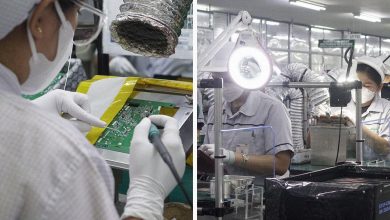MANILA – Filipino consumer confidence remains one of the most optimistic globally, ranking in the top five along with two other Southeast Asia markets, according to the latest Consumer Confidence Index released today by Nielsen, a global information and measurement company.
The Nielsen Global Survey of Consumer Confidence and Spending Intentions reveals that with 115 points, the Philippines is consistently the third most confident globally since the last quarter of 2013. After India, Indonesia is home to the second most confident globally with the country’s consumer confidence at 125 in Q3 2014. Thailand’s Consumer Confidence Index score surged to 113 to land at fourth place. Globally, consumer confidence remains steady at 98 points.
The Nielsen Global Survey of Consumer Confidence and Spending Intentions, established in 2005, measures consumer confidence, major concerns, and spending intentions among more than 30,000 respondents with Internet access in 60 countries. Consumer confidence levels above and below a baseline of 100 indicate degrees of optimism and pessimism.
Concern on job security dips, health and work/life balance worries rise
Although Filipino consumers continue to list job security as a key worry over the next six months, the concern has gone down from 36 percent in the first two quarters of the year to 34 percent in Q3 2014.
Concern on health shows a steady rise from 19 percent in Q1 2014 and 25 percent in Q2 2014 to 27 percent in Q3 2014. Health shares the second cause of concern with work/life balance (27 percent), which has been perennial major concern of Filipino respondents. Filipino consumers have also expressed concern about parent’s welfare and happiness (16 percent), and increasing utility bills (16 percent).
“While consumers are just starting to enjoy the perks of their personal economic growth, a level of caution remain in their view as concerns about job security, health, and the welfare of family members are always in their minds,” noted Stuart Jamieson, Nielsen’s managing director in the Philippines.
Saving for the Future
As such, Filipinos share in the inclination of Southeast Asian consumers to save for the future. Close to seven in 10 Filipino and Thai consumers (67 percent) along with their Southeast Asian neighbors remain focused on putting aside savings for the future with Vietnamese consumers (77 percent) and Indonesian consumers (74 percent) stashing their spare cash into savings after covering essential living expenses. Consumers in other Southeast Asia markets are also diligently saving including those in Singapore (66 percent) and Malaysia (63 percent).
While Filipino consumers channel spare cash into savings and invest in stocks (25 percent), they are also eager to spend on new clothes (37 percent), home improvements/decorating (29 percent), and holidays and vacations (28 percent).
“As consumers move into the middle class, there is an aspiration to build nest eggs therefore increasing the demand for financial services. At the same time, they also reveal a growing desire to improve the immediate environment, which is the home, and indulge in experiential offerings such as vacations,” observed Jamieson.
In the face of rising inflation across the region, a growing number of consumers are looking for ways to curb their everyday household bills. The Philippines joins four Southeast Asia markets (Thailand, Vietnam, Malaysia and Indonesia) in the top 10 globally when it comes to changing their spending to save on household expenses. Close to nine in 10 Thais (88 percent) have changed their spending on household expenses, the highest level globally, followed by 86 percent in Vietnam, 83 percent in the Philippines, 79 percent in Malaysia, 76 percent in Indonesia and 63 percent in Singapore. Spending less on new clothes, trying to save on utility bills, and delaying technology upgrade are some of the most common areas where Filipino consumers are looking to save.
“As Filipino consumers experience an improvement in their economic status, they remain prudent with their spending,” observed Jamieson. “With increases in prices, they will be on the lookout for ways to get more value out of products and services.”










